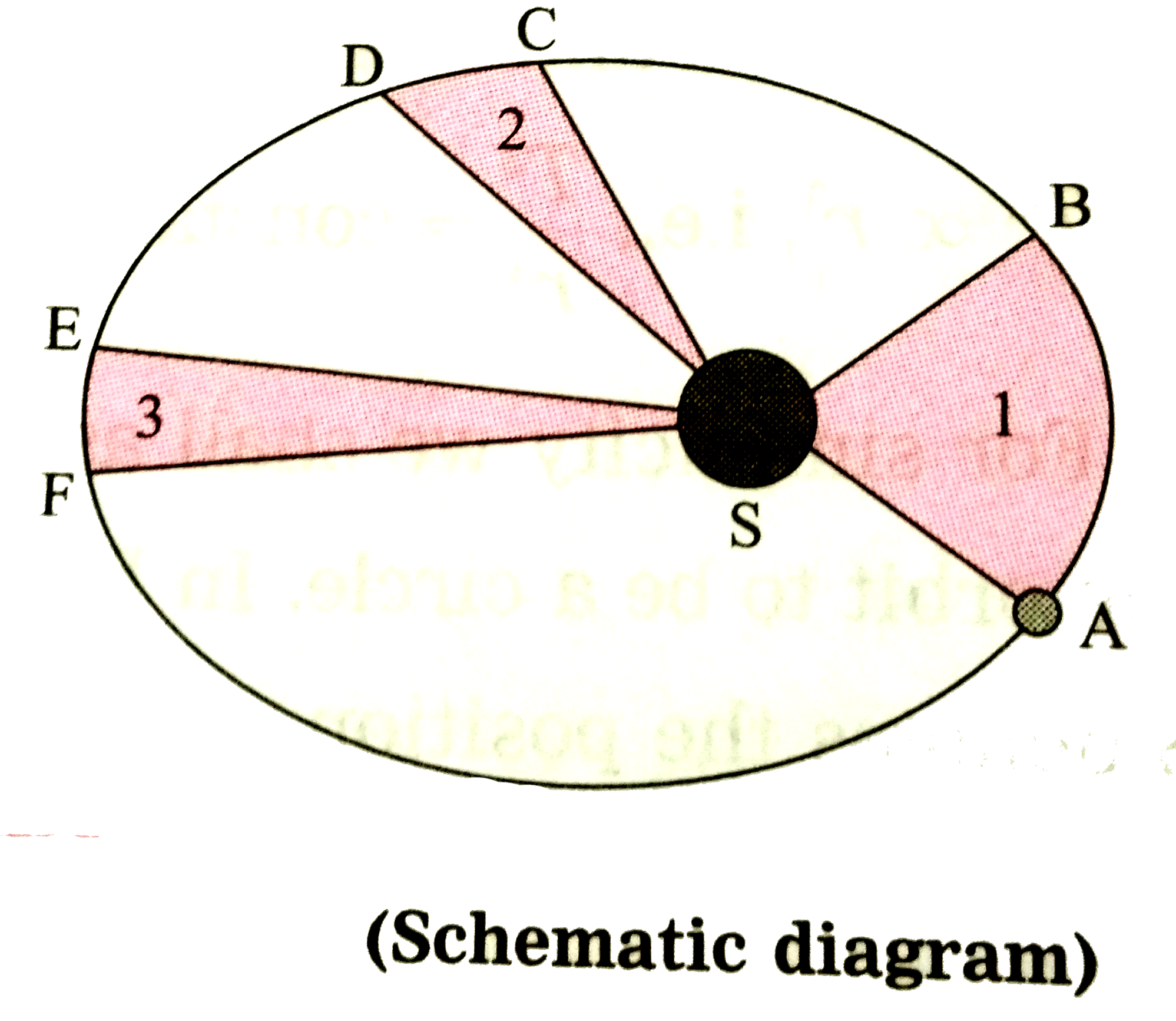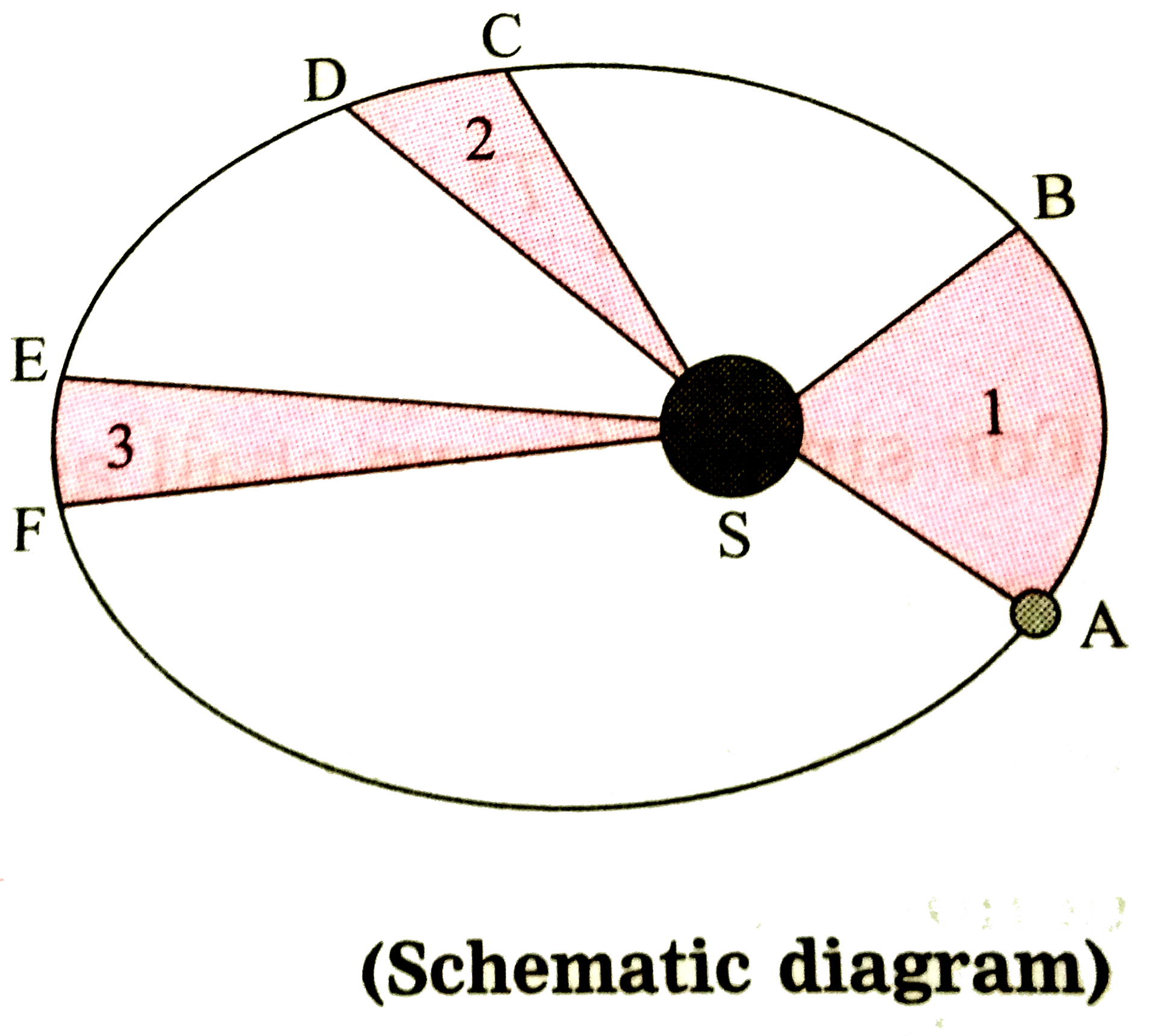In the following figure, an orbit of a planet around the Sun (S) has been shown. AB and CD are the distance convered by the planet in equal time. Lines AS and CS sweep equal areas in equal intervals of time. Hence, areas ASB and CSD are equal.
(a) Which laws do we understand from the above description?

From the given description we understand Kepler's three laws.
Topper's Solved these Questions
- BOOK - NAVNEET PUBLICATION - MAHARASHTRA BOARDCHAPTER - GRAVITATION EXERCISE - Give scientific reasons :3videos
GRAVITATION
- BOOK - NAVNEET PUBLICATION - MAHARASHTRA BOARDCHAPTER - GRAVITATION EXERCISE - Distinguish between :2videos
GRAVITATION
- BOOK - NAVNEET PUBLICATION - MAHARASHTRA BOARDCHAPTER - GRAVITATION EXERCISE - QUESTIONS & ANSWERS45videos
GRAVITATION
- BOOK - NAVNEET PUBLICATION - MAHARASHTRA BOARDCHAPTER - GIVE SCIENTIFIC REASONS EXERCISE - CHAPTER 10 : DISASTER MANAGEMENT2videos
GIVE SCIENTIFIC REASONS
- BOOK - NAVNEET PUBLICATION - MAHARASHTRA BOARDCHAPTER - HEATEXERCISE - NUMERICAL PROBLEMS FOR PRACTICE12videos
HEAT
Similar Questions
In the following figure, an orbit of a planet around the Sun (S) has been shown. AB and CD are the distance convered by the planet in equal time. Lines AS ad CS sweep equal areas in equal intervals of time. Hence, areas ASB and CSD are equal.
(b) Write the law regarding area swept.
 View Solution
View SolutionIn the following figure, an orbit of a planet around the Sun (S) has been shown. AB and CD are the distance convered by the planet in equal time. Lines AS ad CS sweep equal areas in equal intervals of time. Hence, areas ASB and CSD are equal.
Write the law T2∝r3 in your words.
 View Solution
View Solution
Knowledge Check
- Question 1 - Select One
Kepler second law sates that the straight line joining the planet to the sun sweeps out equal areas in equal times this statement is equivalent to saying that
Atotal acceleration is zeroBtangential acceration is zeroClongitudinal acceraleration is zeroDradial acceleration is zero - Question 2 - Select One
According to Kepler's second law, line joining the planet to the sun sweeps out equal areas in equal time intervals. This suggests that for the planet
Aradial acceleration is zeroBtangential acceleration is zeroCtransverse acceleration is zeroDAll - Question 3 - Select One
Assertion : If the law of gravitation becomes inverse cube law even then a line joining the sun the planet sweeps equal areas in equal time intervals .
Reason : A planet moves in an alliptical path .AIf both the assertion and reason are true statement and reason is correct explanation of the assertion .BIf both the assertion and reason are true statement but reason is not a correct explanation of the assertion .CIf the assertion is true but the reason is a false statement.DIf both assertion and reason are false statements.
According to kepler, the line joining a planet to the sun sweeps out……..in equal intervals of time.
View SolutionThe orbit of a planet is an ellipse, line joining the planet and the sun sweeps equal areas in equal intervals of time
F=Gm1m2r2,T2∝R3View SolutionAccording to Kelper's second law, the line joining the planet and the Sun ………………. In equal intervals of time.
View SolutionAccording to Kepler's second law, the radius vector to a planet from the Sun sweeps out equal areas in equal intervals of time. This law is a consequence of the conservation of ______________.
View SolutionThe radius vector drawn from the sun to a planet sweeps out____areas in equal time
View Solution

